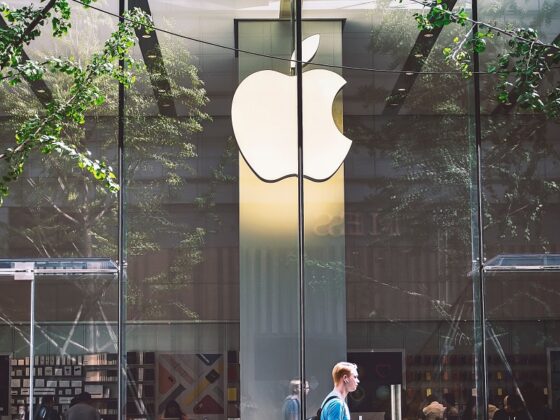As the Republican-dominated House and Senate continue to move their budget bills toward enactment, we’ve been hearing a lot of hypocritical persiflage about “able-bodied” Americans taking undue advantage of Medicaid and food stamps.
Here’s who we haven’t been hearing enough about, however: “Able-bodied” American corporations that have taken advantage of Medicaid, food stamps and other safety net programs for years to get out of paying their workers a living wage by sticking the taxpayers with the expense. These are hidden subsidies.
The beneficiaries of what can properly be defined as corporate welfare include some of America’s biggest employers, such as Walmart, McDonald’s and Amazon. All three consistently land at or near the top of lists of major corporations with significant shares of their workers collecting public assistance.
It’s one thing to say, ‘We’re against socialism,’ but it can’t be socialized capitalism for the corporations and no safety net for individuals.
— Barry Ritholtz
McDonald’s in 2013 even established a “McResource Line” that offered advice to employees about how to access Medicaid and food stamps, among other suggestions. (The company shut it down late that year out of embarrassment and critics’ ”inappropriate commentary.”)
These corporations are enormously profitable. Last year Walmart earned $19.4 billion on sales of $681 billion, McDonald’s earned $8.2 billion on sales of $26 billion, and Amazon earned $59 billion on sales of $638 billion.
Newsletter
Get the latest from Michael Hiltzik
Commentary on economics and more from a Pulitzer Prize winner.
You may occasionally receive promotional content from the Los Angeles Times.
Yet millions of their workers, including many employed full time, have to rely on public assistance, as the Government Accountability Office reported in 2020. If the Republican Congress pursues its campaign to strip access to government programs away from more Americans, more of those workers will be trapped in a poverty spiral.
These hidden subsidies haven’t garnered much attention since the pandemic emergency, during which government relief programs expanded access to Medicaid and other such programs to a wider swath of the American workforce. But they should be front and center in the current debate over the GOP budget proposals.
That’s because the GOP program involves drastic cuts to the safety net: The Senate GOP proposal would cut Medicaid by as much as $863 billion over 10 years, and pare $186 billion from the federal share of food stamps, formally known as the Supplemental Nutrition Assistance Program, or SNAP.
The savings would be steered to wealthy Americans and corporations, which already benefited immensely from tax cuts enacted by Republicans in 2017, during President Trump’s first term.
Wall Street has been cheering the GOP’s efforts to preserve those tax cuts — that’s one reason that the stock market, as measured by the Standard & Poor’s 500 index, has been notching all-time records. Not everyone on Wall Street, though.
“It’s one thing to say, ‘We’re against socialism,’ but it can’t be socialized capitalism for the corporations and no safety net for individuals,” says the New York wealth manager Barry Ritholtz, the author of “Bailout Nation,” a 2010 book about the causes and aftermath of the Great Recession, and who labeled McDonald’s and Walmart “welfare queens” back in 2013. (His latest book, “How Not to Invest,” is an invaluable guide to avoiding the common market pitfalls confronting the small investor.)
“If you’re a publicly trade private company, you’ve got to figure out a way to pay your employees a living wage without relying on the taxpayer to subsidize your labor costs,” Ritholtz told me when I called to ask him for an update. “If you’re the biggest beneficiary of food assistance, you are not truly an independent private company; you’re a ward of the state.”
Data on the percentage of workers at big companies receiving food stamps or Medicaid are spotty. The broadest up-to-date statistics were published by the Government Accountability Office in October 2020, at the behest of Sen. Bernie Sanders (I-Vt.).
The GAO documented that 48% of adult Medicaid enrollees and 51% of SNAP recipients worked at least 35 hours per week for at least 50 weeks in 2018 — in other words, at or close to full time. The majority of those workers were employed by private businesses, mostly in the restaurant and hotel industries, supermarkets and department stores. Well more than half worked for big employers, defined as those with 100 workers or more.
Among the six states that submitted detailed statistics on Medicaid to the GAO and nine states that provided SNAP figures, more than 1.3 million workers employed by the states’ top 25 employers were on Medicaid or SNAP or both, suggesting that the national figures were significantly higher. In some of those states, the GAO found, workers at those companies accounted for nearly 20% of the total enrollments of Medicaid and SNAP.
More recent figures have come from Nevada, which issues an annual report of the state’s cost of Medicaid services for workers at businesses with 50 or more employees. The most recent report, issued in January and covering 2024, found that more than 380,000 workers and their dependents were enrolled in Medicaid, a slight increase over the previous year. The state’s cost came to more than $1.1 billion.
Amazon, with 18,093 workers and dependents on Medicaid last year, was the leading employer in this category, a position it has held since 2020. Walmart was top on the Nevada list from 2017 through 2019 and has ranked second to Amazon since then.
Amazon says it’s unfair to ascribe the enrollment of its employees in public assistance programs to its pay practices. “Despite competitive pay and great benefits, employees at large companies may still be on public benefits depending on household factors and government policies,” it told me by email. “Household factors that can determine eligibility include: household size, special needs and disability, medical care of dependents (children and elderly), immigration status, asset ownership, and cost of living.”
Walmart and McDonald’s both cited benefits they offer employees as counterweights to financial pressures.
“On top of hourly pay, McDonald’s offers incentives in its company owned restaurants like paid time off, 401K and financial counseling services, and training and education programs — and many franchisees do the same,” the company told me by email.
Walmart said, also by email, “Our goal is to support every associate, including those joining us while receiving public assistance, as they work toward a better future.”
All three companies have taken steps in recent years to increase minimum wages for their workforces.
Walmart announced in 2023 that it would increase the average minimum wage for its employees to more than $17.50 per hour, up from $17. In 2018, Amazon established a $15 minimum wage nationwide (but a couple of years ahead of an increase to $15 enacted in California), up from a median $13.68. McDonald’s in 2021 announced an increase in its minimum pay for crews at its company-owned stores to as much as $17.
Opponents of minimum-wage increases maintain that those workers are typically teenagers working their first jobs. That’s wrong. About 19% are 16 to 19 years old, according to the Bureau of Labor Statistics. But 26% are 25 to 34, 13% are 35 to 44, and 13.5% are 45 to 64. Nor should it be overlooked that in 19 states, especially in the Southeast, the minimum wage is only $7.25 per hour, the federal minimum. That rate hasn’t been increased since 2009.
These statistics point to several uncomfortable realities about U.S. economic policies. First, they underline how all the hand-wringing from Republicans about lazy layabouts collecting Medicaid and food stamps instead of working is balderdash.
That’s been evident for years. Census figures show that of adult Medicaid recipients, 64% work full or part time. Of the rest, 12% are caring for home or family, 10% are ill or disabled, 6% are in school and 4% are retired. Of the remaining 4%, half can’t find work and the conditions of the other half are undetermined.
Medicaid experts agreed that the only way to cut the program’s costs is to throw enrollees off. The GOP budget bill would do precisely that through cuts that would leave 7.8 million enrollees without health coverage. Some big employers might improve their low-income workers’ access to health insurance to take up some of the slack, but to turn a famous quote from Damon Runyon upside down, that’s not the way to bet.
Another point underscored by the millions of American workers who still need government assistance to obtain healthcare and food relief is the explosive increase in economic inequality in the U.S. Since the 1970s, the ratio of corporate CEO pay to the compensation of their companies’ median employee has soared.
In 1970, chief executives on average made about 20 times as much as their median workers. The ratio peaked in 2000 at 390 to 1, fell during the pandemic and since then has moved back to about 290 to 1.
At Walmart, McDonald’s and Amazon, the ratio is much higher. At Walmart, it was 930 to 1 in 2024, according to a disclosure in the company’s most recent proxy statement, and at McDonald’s it was 1,014 to 1. Both figures reflect the run-up in CEO pay and the firms’ reliance on low-wage workers; the McDonald’s figure may be conservative, because so many workers behind its counters are employed by franchisees, the pay scales of which aren’t reflected in the corporate accounting.
Amazon may be another special case. It stated that the 2024 compensation of its CEO, Andy Jassy, was only about $1.6 million and therefore the ratio of his pay to the median Amazon employee was only 43 to 1. That’s curious: It’s absurd to think that the CEO of one of America’s biggest and most successful corporations was paid only $1.6 million last year.
As it turns out, Amazon, unlike other big companies, chose not to count the stock options vested for Jassy last year — worth about $21.75 million — as part of his compensation.
Amazon told me by email that it complied with the Securities and Exchange Commission regulations governing the CEO pay ratio disclosures. But it also acknowledged the compensation actually paid to Jassy last year, including the value of restricted shares that vested during the year, was $92.4 million — a figure that would make the ratio of his pay to that of the median full-time U.S. Amazon employee ($47,990) not 43 to 1 but 1,925 to 1.
Can there be any more damning condemnation of the American way of doing business than the hidden labor subsidies bestowed on our largest corporations?
In the 1980s, Ronald Reagan justified his attack on welfare by spinning yarns about a mythical welfare queen who drove to pick up her relief check in a Cadillac. America’s elite corporations have outdone her, by a wide margin — and they’re not creatures of myth.













